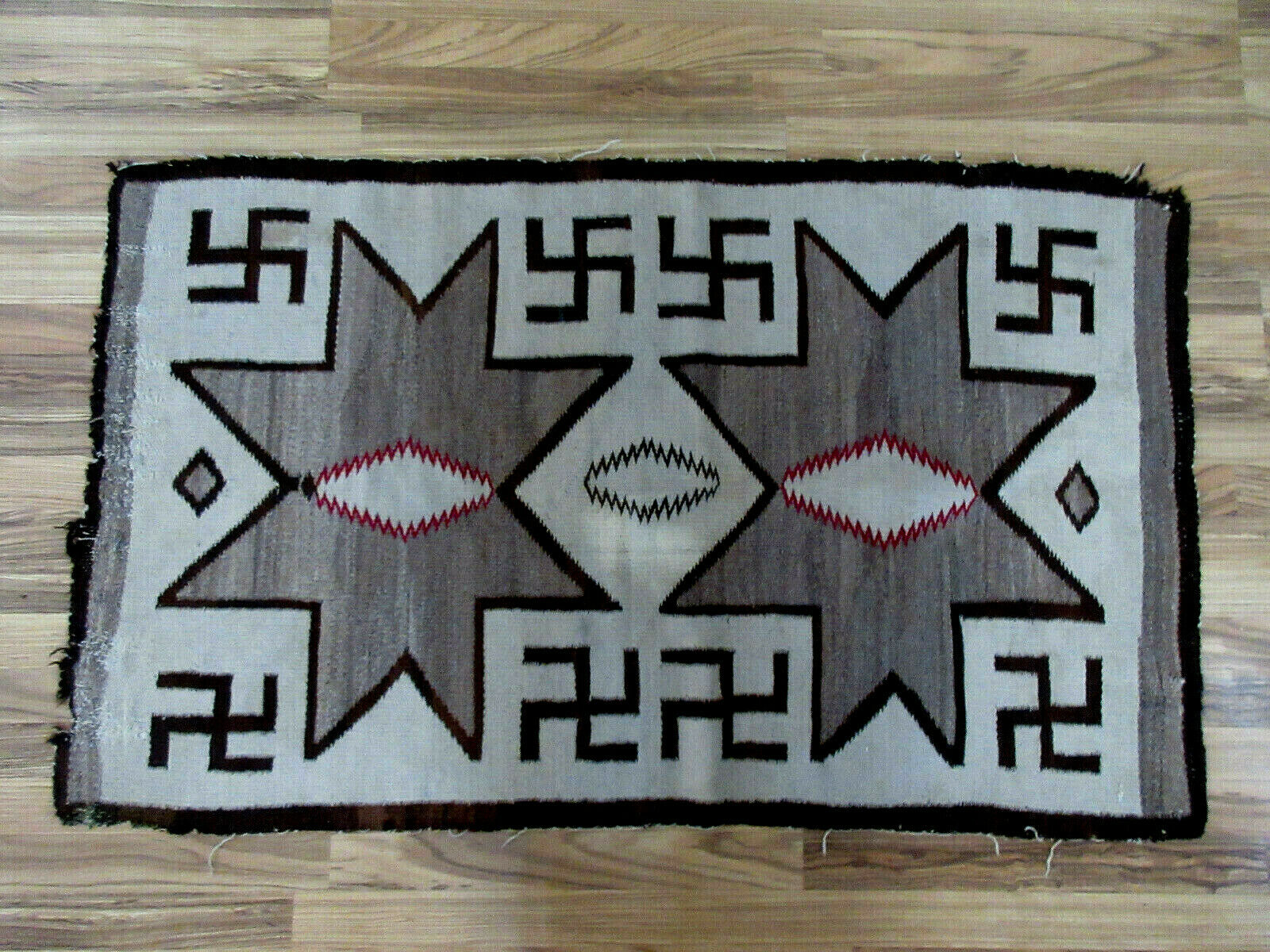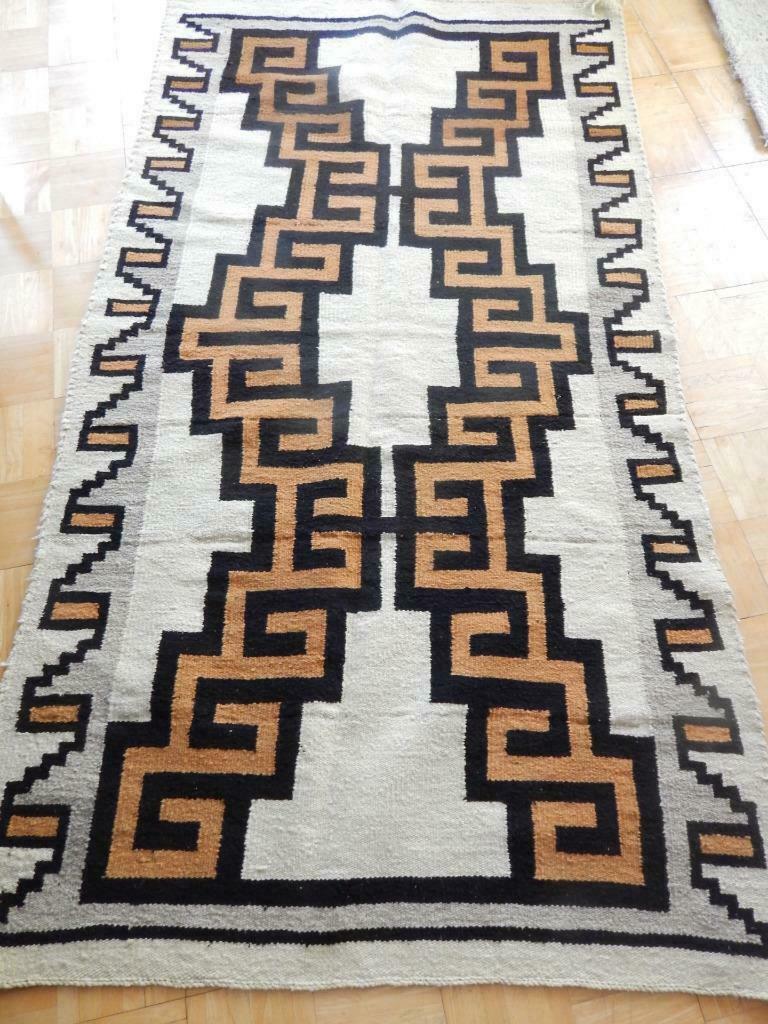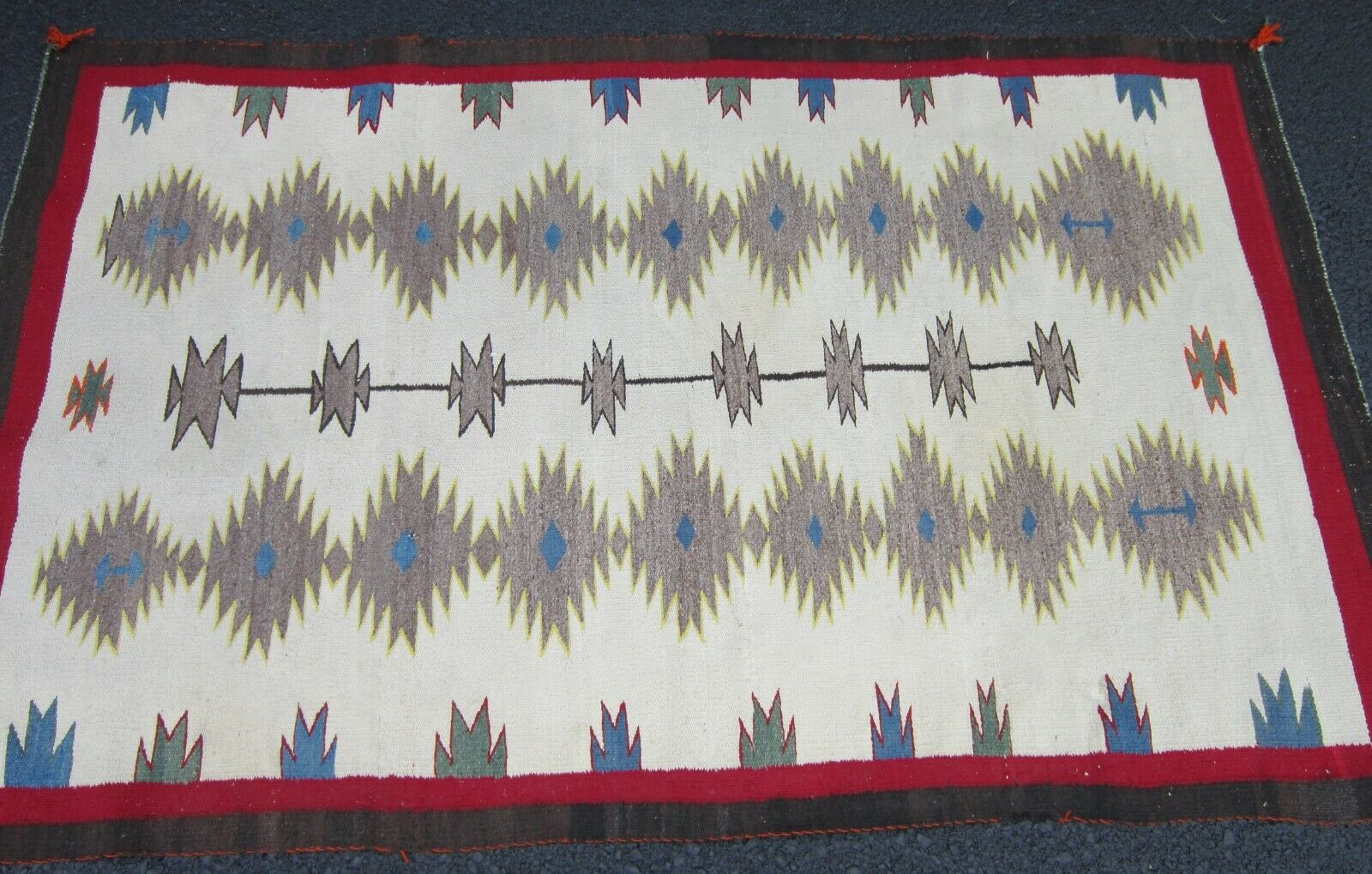-40%
NAVAJO WEAVING STORM PATTERN BY AWARD WINNING MARY SHEPHERD 58” X 33” 100% WOOL
$ 1584
- Description
- Size Guide
Description
NAVAJO WEAVING STORM PATTERN BY AWARD WINNING MARY SHEPHERD58” X 33” 100% WOOL USING AN UPRIGHT LOOM.
ABSOLUTELY STUNNING LARGE WOVEN RUS. IT WAS TREASURED AND COMES IN PRISTINE CONDITION.
RUG WAS PURCHASED IN EARLY 1990’s.
MARY SHEPHERD won many awards for her weaving.
The Storm rug style is distinguished by its design, not colors. This abstract design is supposed to contain the Navajo symbolism for a storm, but it is widely believed a trader in Tuba City developed and promoted it among local weavers, perhaps after hearing a Navajo legend, or possibly from a printed flour sack. It is the only rug style that purports to be an abstract portrayal of a natural event.
In the middle of the rug is a rectangle, representing the center of the universe. Four rectangles in the corners of the rug stand for the homes of the four winds or, by some interpretations, the four sacred mountains of the Navajo world. Zigzag “lightning” connects these with the center.
Storm rugs usually have a dark border that is often embellished on one side with geometric “teeth.”
The space between the main design and the border usually contains stylized elements, such as clouds and water beetles. Arrows, feathers, and geometric designs abound.
Navajo people believe that in the beginning at the time of creation, Spider Woman taught the Navajo people the art of weaving and Spider Man taught them how to make their sacred loom.
Everything a weaver needed was there – fibers and dyes from plants, design elements from nature – lightning, stars, the sun, terraced clouds, trees, animal tracks, the four sacred mountains, the four cardinal directions. Inspiration came from sandstone striations on vermilion cliffs, from white of day and black of night. Modern experts say the Navajo learned to weave from the Pueblo people, yet the Navajo know that it was Spider Woman who helped them create a web of beauty with their sashes, mantas, serapes, breechcloths, blouses and blankets.
The first descriptions of Navajo textiles appeared in Spanish accounts from the 1700s. Later reports came from U.S. military and government personnel. The Navajo first wove with native cotton and yucca fibers. Indigenous people cultivated cotton as early as 700 AD in the Salt-Gila region and by the 1100s in Canyon de Chelly. Over time weavers replaced these plant materials with the silky wool of churro sheep, introduced by the Spanish in the 1500s . From increased contact with Spanish and Mexican neighbors, the Navajos’ original color palette of natural wool and vegetal dyed yellow, was augmented by the brilliant red of raveled English bayeta cloth, Spanish indigo dye and Saxony yarn.














